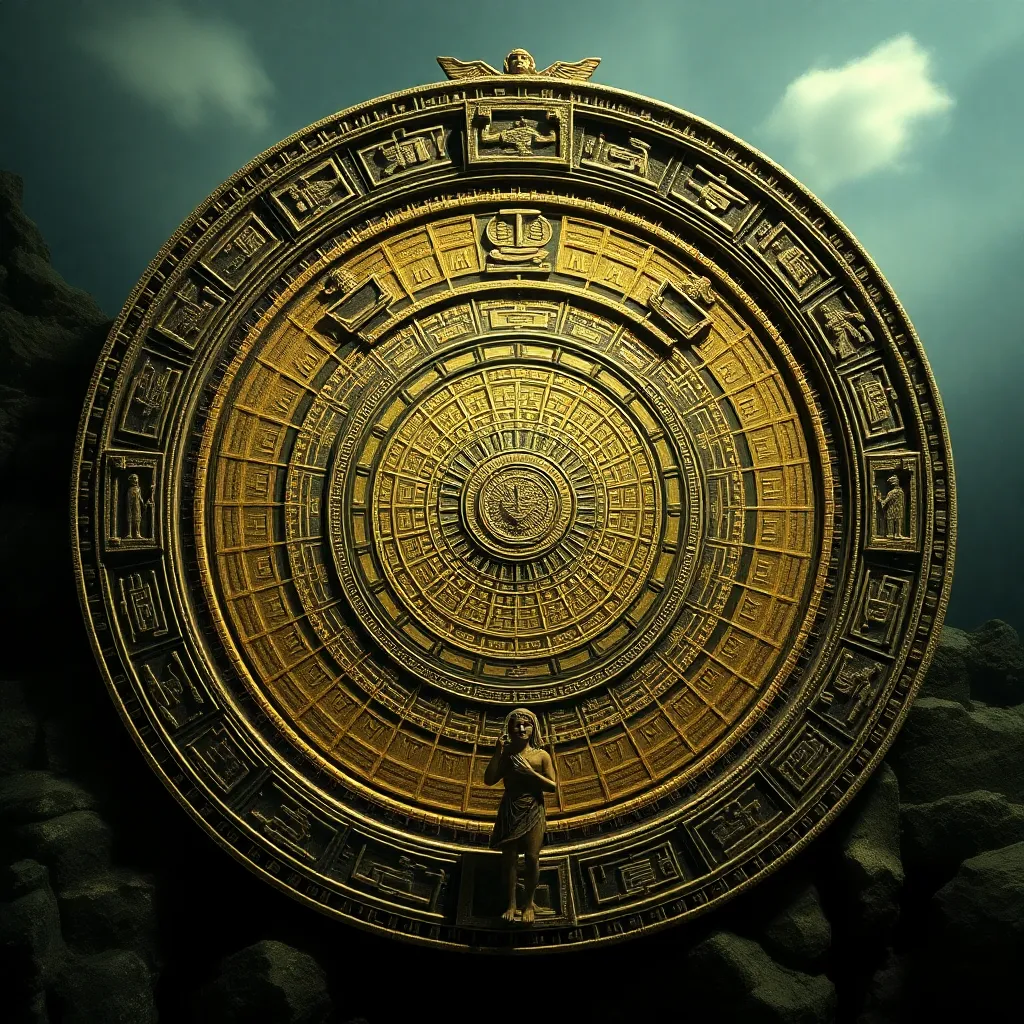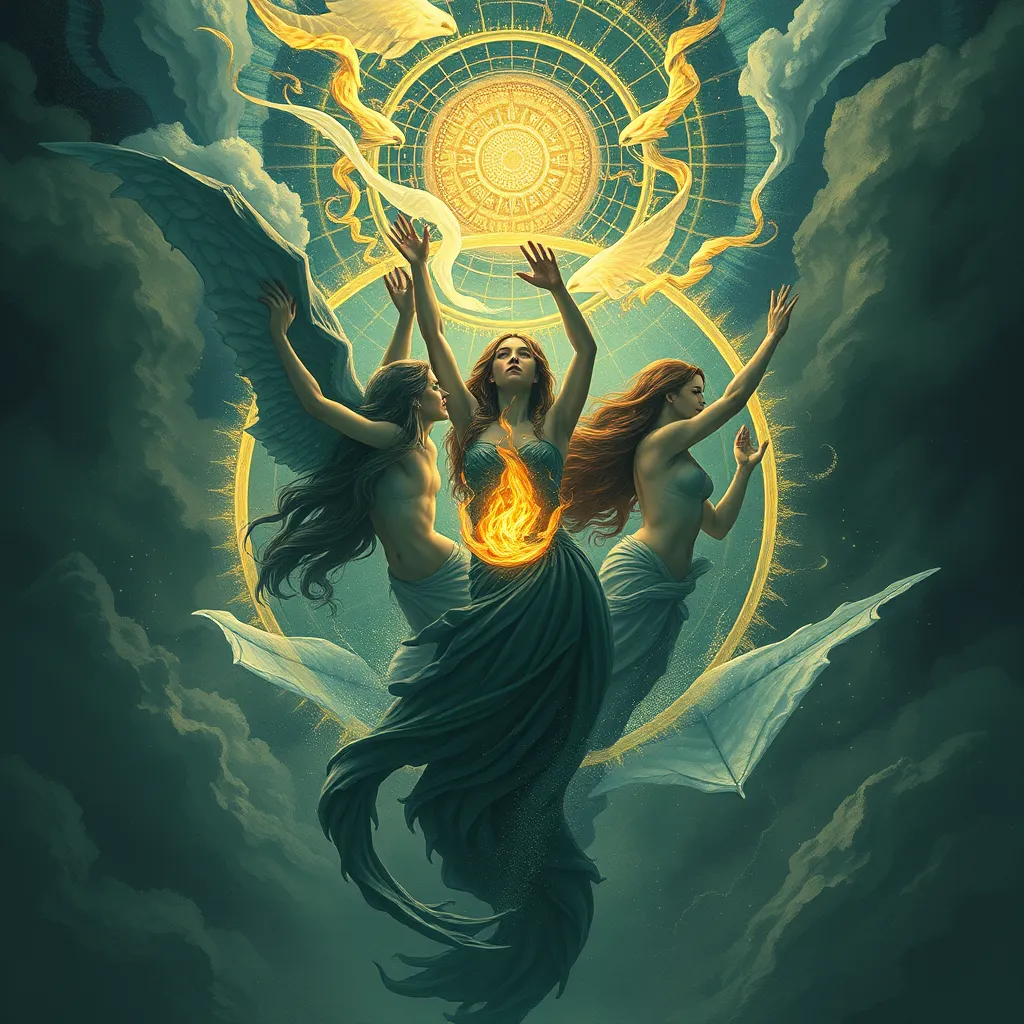The Mayan Ritual Calendar: Itzamná’s Presence in the Cycle of the Year
I. Introduction
The Mayan civilization, flourishing in Mesoamerica from around 2000 BC to the arrival of Spanish colonizers in the 16th century, is renowned for its sophisticated understanding of astronomy, mathematics, and writing. The cultural significance of the Maya is evident in their monumental architecture, intricate art, and complex social structures, which have fascinated scholars and enthusiasts alike.
Central to Mayan culture is the Mayan Ritual Calendar, a vital tool used for religious ceremonies, agricultural planning, and social organization. This calendar reflects the Maya’s profound connection to the cosmos and their environment, shaping their understanding of time and the natural cycles that govern life.
At the heart of this calendar is Itzamná, a principal deity representing wisdom, creation, and the heavens. Itzamná’s influence permeates the Mayan calendar systems, marking the interaction between spirituality and daily life.
II. Understanding the Mayan Calendar Systems
The Mayan civilization employed multiple calendar systems, primarily the Tzolk’in and Haab’ calendars, each with its unique structure and purpose.
A. Explanation of the Tzolk’in and Haab’ calendars
The Tzolk’in is a 260-day sacred calendar composed of 20 periods of 13 days, with each day represented by a unique name and number. This calendar is deeply intertwined with religious events and rituals, guiding the spiritual life of the Maya.
In contrast, the Haab’ calendar consists of 365 days, divided into 18 months of 20 days each, followed by a short month of 5 days called ‘Wayeb’. The Haab’ is primarily used for agricultural and civil purposes, marking the passage of the solar year.
B. The significance of the Calendar Round: 52-year cycle
The combination of the Tzolk’in and Haab’ calendars creates a Calendar Round, which lasts 52 years. This cycle is crucial for the Maya, as it signifies the completion of a full cycle of time, after which the two calendars align again. The end of a Calendar Round was often marked by significant rituals and ceremonies, indicating renewal and the importance of the cyclical nature of time.
C. Role of the Long Count calendar in tracking historical events
The Long Count calendar is another essential aspect of the Mayan timekeeping system. It allows the Maya to track historical events over long periods, composed of a series of cycles, including the baktun (144,000 days). This calendar was critical for recording dates and events in Mayan history, including the reign of kings and significant milestones in their civilization.
III. Itzamná: The God of Wisdom and Creation
Itzamná is one of the most revered deities in Mayan mythology, embodying wisdom, knowledge, and creation. He is often depicted as an old man, symbolizing his vast understanding and connection to the cosmos.
A. Overview of Itzamná’s attributes and importance in Mayan mythology
As a creator god, Itzamná is associated with the creation of humanity and the world. He is considered the patron of the sciences, particularly astronomy and agriculture, guiding the Maya in their understanding of the universe and their agricultural practices.
B. Itzamná’s associations with knowledge, the heavens, and agriculture
Itzamná is connected to the sky and is believed to reside in the heavens, symbolizing the link between the earthly and the divine. His influence on agriculture is paramount; he is often invoked in rituals aimed at ensuring good harvests and fertility of the land. The Maya viewed agricultural cycles as sacred, intricately tied to their spiritual beliefs.
C. Symbolism of Itzamná in relation to the calendar
In the context of the Mayan calendar, Itzamná represents the cyclical nature of time and the interdependence of life and the cosmos. His presence in the calendar underscores the importance of aligning human activities with celestial events, reinforcing the Maya’s connection to the natural world.
IV. The Rituals and Festivals of the Mayan Calendar
The Mayan calendar is rich with rituals and festivals, each designed to honor the gods and ensure harmony with nature.
A. Key rituals tied to the Tzolk’in calendar
The Tzolk’in calendar’s 260 days are filled with various rituals, including:
- Initiations and rites of passage
- Offerings to deities on specific days
- Healing ceremonies
B. Seasonal festivals linked to the Haab’ calendar
The Haab’ calendar marks agricultural cycles with seasonal festivals, such as:
- New Year celebrations
- Harvest festivals
- Rituals to honor the dead
C. The role of Itzamná in these rituals and their significance
Itzamná plays a crucial role in these rituals, often invoked to bless the ceremonies and ensure their success. His presence is believed to bring wisdom and favor, vital for the community’s prosperity and spiritual well-being.
V. The Interplay Between Itzamná and the Agricultural Cycle
Itzamná’s influence extends deeply into the agricultural practices of the Maya, reflecting the interconnection between their spirituality and sustenance.
A. How Itzamná influenced planting and harvesting schedules
The Maya relied on Itzamná to determine the best times for planting and harvesting. His guidance was sought during specific days of the Tzolk’in calendar, believed to be auspicious for agricultural activities.
B. Ritual practices aimed at ensuring fertility and abundance
To ensure fertility, the Maya performed various rituals, such as:
- Offerings of food and tobacco
- Prayers and petitions to Itzamná
- Creating symbolic representations of crops
C. The agricultural calendar’s dependence on celestial events
The agricultural calendar was intricately linked to celestial events, with Itzamná as a guiding force. Events such as solstices and equinoxes were crucial in determining the timing of agricultural activities, reflecting the Maya’s profound understanding of the cosmos.
VI. The Influence of Itzamná on Mayan Society and Governance
Itzamná’s presence permeated the political and spiritual life of the Maya, influencing their governance and societal structures.
A. Itzamná’s role in the political and spiritual life of the Maya
As a central figure in Mayan spirituality, Itzamná was often invoked by leaders and priests. His wisdom was believed to guide decisions, ensuring that the community remained in harmony with the divine will.
B. How leaders and priests utilized the calendar for decision-making
The Mayan leaders and priests used the calendar to plan significant events, including:
- Warfare
- Coronations
- Construction of temples
C. The integration of rituals into public life and governance
Rituals honoring Itzamná were integral to public life, reinforcing the connection between governance, spirituality, and community well-being. These ceremonies fostered unity and ensured that the people remained aligned with the cycles of the universe.
VII. The Legacy of the Mayan Ritual Calendar and Itzamná
The Mayan Ritual Calendar and the figure of Itzamná have left an indelible mark on contemporary culture and spirituality.
A. The enduring impact of the Mayan calendar in contemporary culture
The Mayan calendar continues to influence modern interpretations of time and spirituality, with many people today seeking to understand its complexities and significance.
B. Itzamná’s presence in modern interpretations of Mayan spirituality
Itzamná remains a prominent figure in discussions surrounding Mayan spirituality, often symbolizing wisdom, creation, and the interconnectedness of all life.
C. Preservation efforts and the importance of cultural heritage
Efforts to preserve Mayan cultural heritage are crucial for maintaining the knowledge of the calendar and the significance of deities like Itzamná. These preservation efforts ensure that future generations can appreciate and learn from the rich history of the Maya.
VIII. Conclusion
The Mayan Ritual Calendar, with its intricate ties to Itzamná, exemplifies the profound relationship between the Maya and their understanding of time, spirituality, and agriculture. The significance of this calendar extends beyond its historical context, offering valuable insights into the interconnectedness of culture, nature, and the cosmos.
Understanding ancient cultures like the Maya enriches our appreciation of human history and the diverse ways



